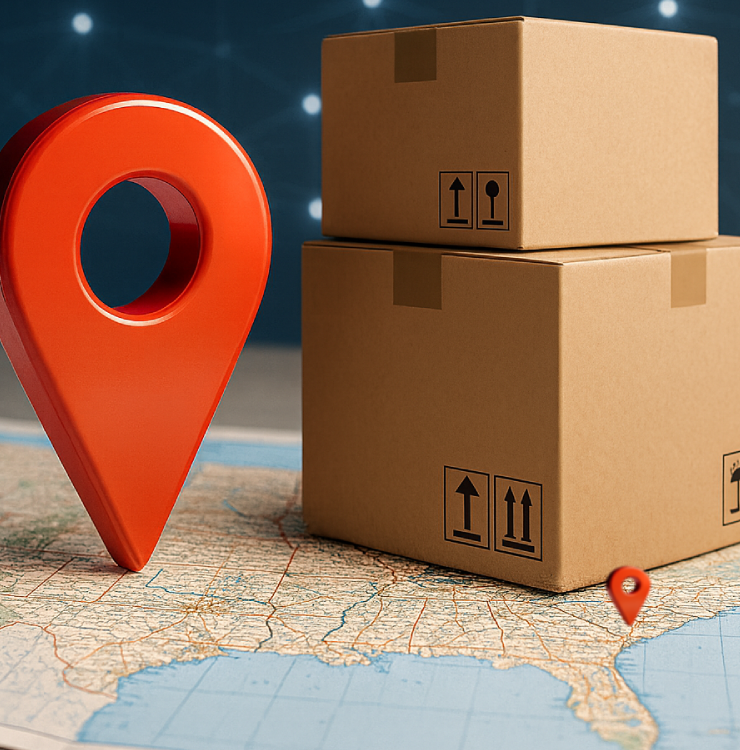
The control tower approach has long been a staple of supply chain management.
A broad definition of a control tower is a system that connects data, metrics and events across the supply chain. The goal is to enable organizations to understand, prioritize and resolve supply chain issues in real time.
An ecommerce control tower is similar…but different.
An ecommerce control tower focuses on connecting the two basic drivers of success:
- The customer – connecting everywhere you sell with…
- The product – all of your available sources of inventory
Then, along with being able to proactively address issues in real time, an ecommerce control tower is designed to optimize every order – ensuring that you realize the most margin possible while still meeting the customer’s delivery requirements.
The three foundations of a successful ecommerce control tower are:
Integration
Integration lies at the heart of ecommerce operations. Sales channels, inventory sources, content management systems, ERPs and other systems of record – there seems to be an unending list of integrations that have to be made, managed and maintained ensure smooth order and accurate inventory management. And many of these systems were never designed to work together.
At first, simple point-to-point connections seem to be the obvious answer. But these are not scalable and can be a nightmare to manage and maintain. An ecommerce control tower solves the problem by proving a centralized hub. Rather than attempting to connect a host of disparate systems, you just connect systems to the hub and let the control tower do the heavy lifting.
Another advantage to the powerful integration capabilities of an ecommerce control tower: it allows the control tower to work with other WMS, ERP and systems you already have in place. No need for a costly, risky “rip and replace”.
Automation
Once connected, an ecommerce control tower automates order and inventory management to reduce errors, cut overhead, and speed processing. In control tower systems leveraging Distributed Order Management (DOM), orders are automatically routed to the lowest total cost source of fulfillment while still meeting the customer’s delivery expectations. That ensures you make the most margin possible on every order.
Information
Complex ecommerce ecosystems provide complex flows of data. Different formats. Different taxonomies (specific information requirements by each sales channel for each SKU). Different policies, specifications and strategies.
Ecommerce control towers aggregate, normalize and report information from sales channels and inventory sources – all in a consistent format and in one, centralized location. That improves sales, inventory and ROI analysis. It improves forecasting and replenishment. But perhaps most importantly, it allows leadership to establish quantitative metrics. These KPIs, based on metrics gathered across the ecommerce ecosystem, helps ensure organizational alignment, informs data-based decision making, and aids top management in driving and rewarding progress towards executing a successful D2C strategy.
What Success Looks Like
Here's an overview of how an ecommerce control tower works and why they provide such a powerful tool for scaling D2C ecommerce operations.
Sales Channel Management
Easily add new sales channels. Support dropship vendor (DSV) and other channel programs.
Order Management
Accept orders in any format (EDI, API, flat file etc). Automatically split, cartonize and route orders to maximize margin.
Inventory Management
Gain complete visibility to all inventory and sources of fulfillment: your facilities, 3PLs, FBA and other marketplace fulfilment options, fulfillment partners, distributors and wholesalers, and at retail.
Forecast Management
Forecast and replenish inventory based on real-time market data including seasonality trends.
Catalog & Listing Management
Manage catalog and listings from a centralized platform. Update automatically across all channels in the format each channel requires. Tie listing visibility, content and pricing to regional inventory availability and cost of fulfillment.
Fulfillment Management
Support multiple methods of fulfillment including pick-pack-ship, drop shipping and just-in-time cross docking. Provide “D2C lite” tools to help existing facilities to pick, pack and ship D2C orders.
Integration & Partner Management
Make it easy to add, change or delete trading partners. Keep options open as new opportunities arise.
Reporting & Business Analytics
Aggregate, normalize and report data from across the ecommerce ecosystem. Leverage easy-to-create dashboards and reports to make data available throughout the organization in the format needed.
Want to learn more about ecommerce control towers? Check out our infographic What is an Ecommerce Control Tower?




